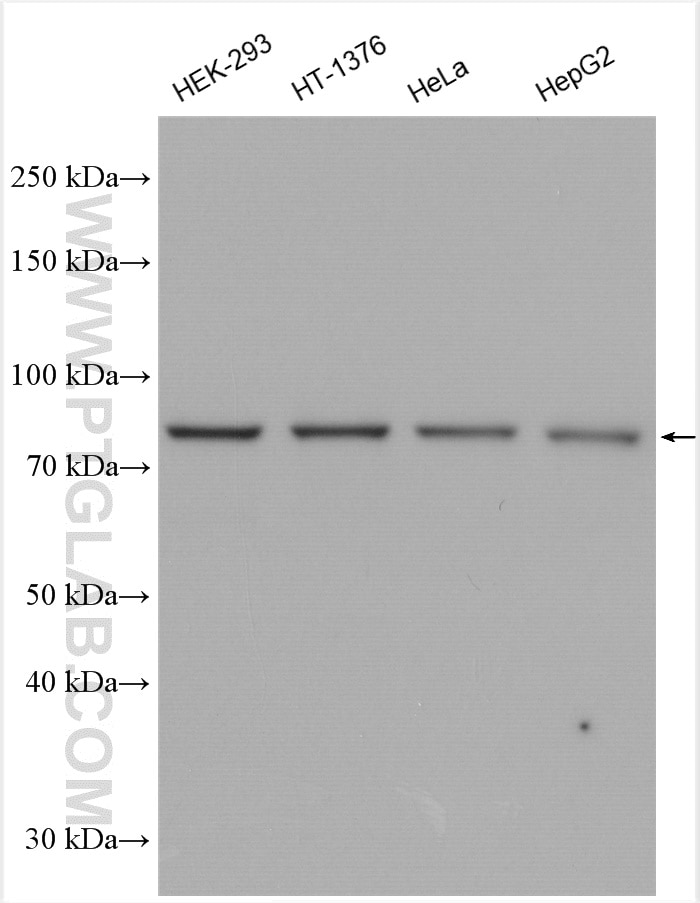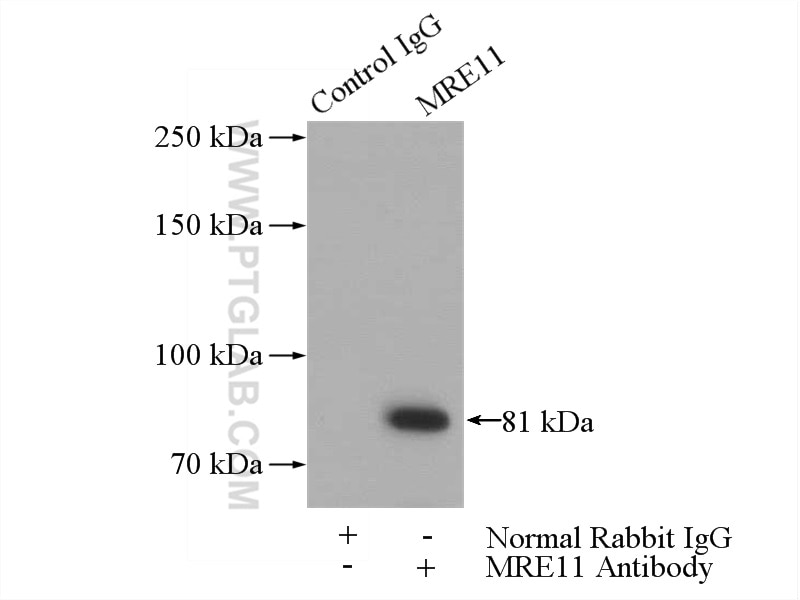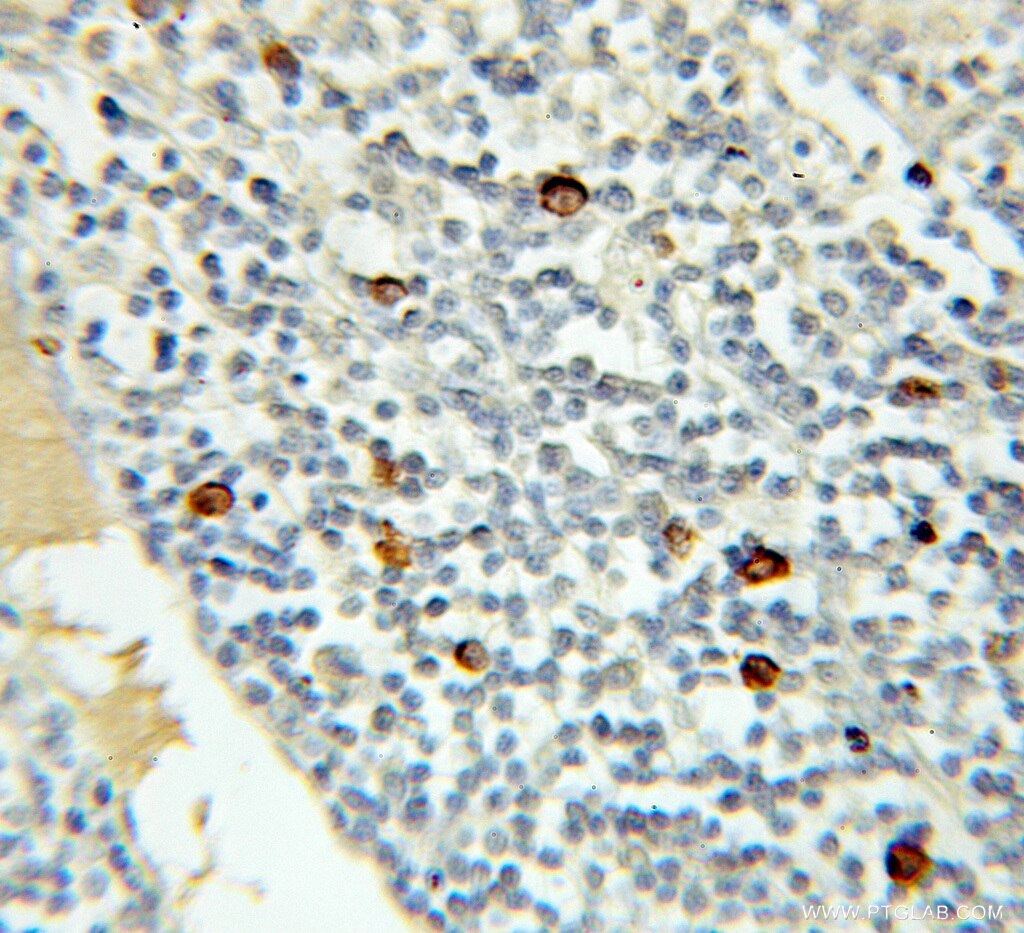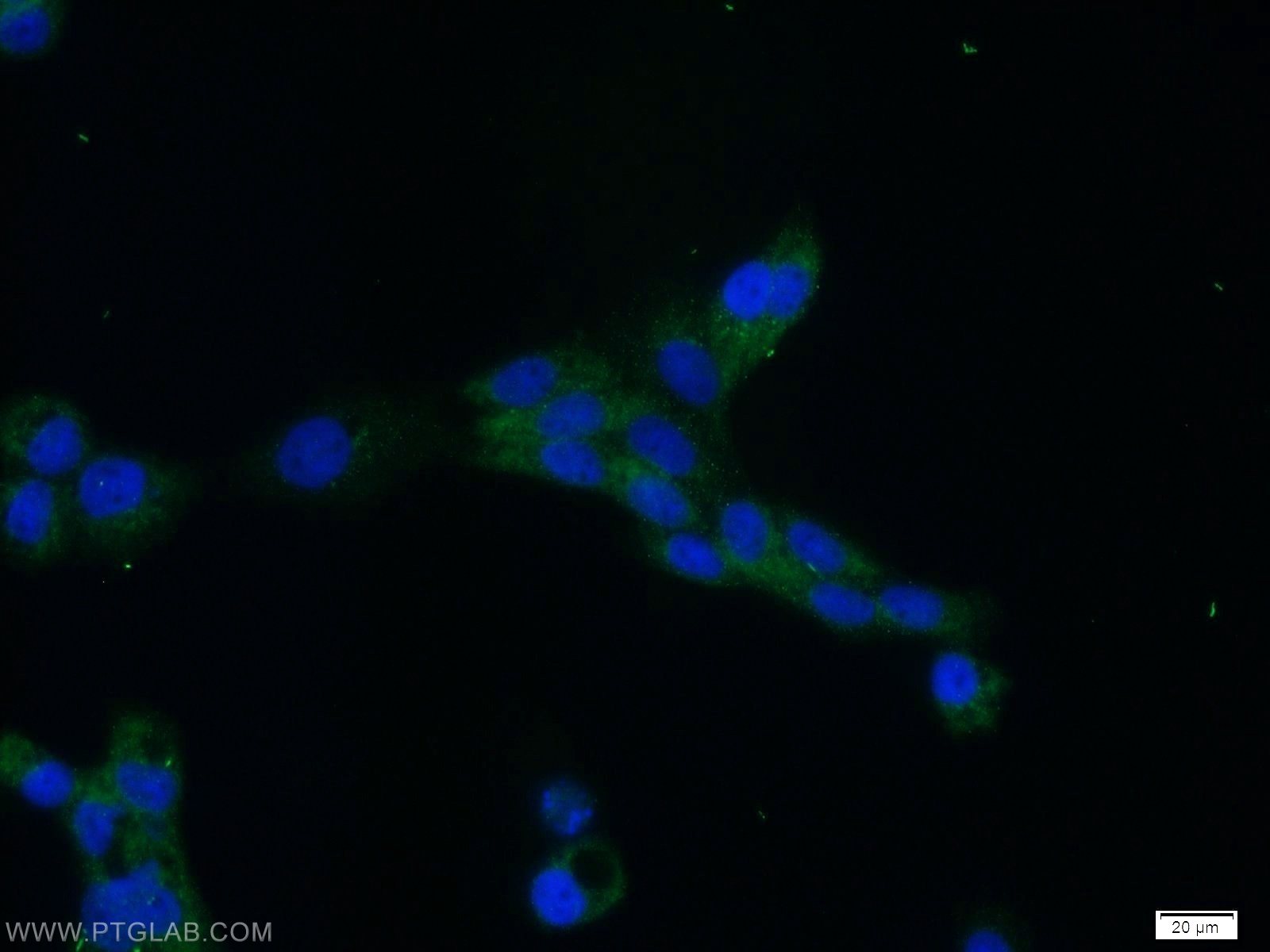Anticorps Polyclonal de lapin anti-MRE11
MRE11 Polyclonal Antibody for WB, IHC, IP, ELISA
Hôte / Isotype
Lapin / IgG
Réactivité testée
Humain, rat, souris
Applications
WB, IHC, IF, IP, ChIP, ELISA
Conjugaison
Non conjugué
N° de cat : 10744-1-AP
Synonymes
Galerie de données de validation
Applications testées
| Résultats positifs en WB | cellules HEK-293, cellules HeLa, cellules HepG2 |
| Résultats positifs en IP | cellules HeLa |
| Résultats positifs en IHC | tissu de lymphome humain il est suggéré de démasquer l'antigène avec un tampon de TE buffer pH 9.0; (*) À défaut, 'le démasquage de l'antigène peut être 'effectué avec un tampon citrate pH 6,0. |
Dilution recommandée
| Application | Dilution |
|---|---|
| Western Blot (WB) | WB : 1:500-1:2000 |
| Immunoprécipitation (IP) | IP : 0.5-4.0 ug for 1.0-3.0 mg of total protein lysate |
| Immunohistochimie (IHC) | IHC : 1:20-1:200 |
| It is recommended that this reagent should be titrated in each testing system to obtain optimal results. | |
| Sample-dependent, check data in validation data gallery | |
Applications publiées
| WB | See 12 publications below |
| IHC | See 1 publications below |
| IF | See 3 publications below |
| ChIP | See 1 publications below |
Informations sur le produit
10744-1-AP cible MRE11 dans les applications de WB, IHC, IF, IP, ChIP, ELISA et montre une réactivité avec des échantillons Humain, rat, souris
| Réactivité | Humain, rat, souris |
| Réactivité citée | rat, Humain, souris |
| Hôte / Isotype | Lapin / IgG |
| Clonalité | Polyclonal |
| Type | Anticorps |
| Immunogène | MRE11 Protéine recombinante Ag1105 |
| Nom complet | MRE11 meiotic recombination 11 homolog A (S. cerevisiae) |
| Masse moléculaire calculée | 81 kDa |
| Poids moléculaire observé | 81 kDa |
| Numéro d’acquisition GenBank | BC005241 |
| Symbole du gène | MRE11A |
| Identification du gène (NCBI) | 4361 |
| Conjugaison | Non conjugué |
| Forme | Liquide |
| Méthode de purification | Purification par affinité contre l'antigène |
| Tampon de stockage | PBS with 0.02% sodium azide and 50% glycerol |
| Conditions de stockage | Stocker à -20°C. Stable pendant un an après l'expédition. L'aliquotage n'est pas nécessaire pour le stockage à -20oC Les 20ul contiennent 0,1% de BSA. |
Informations générales
Mre11 (meiotic recombination 11), also named as Mre11A, is a component of the MRN( MRE11/RAD50/NBS1) complex which is a versatile complex, playing a key role in the sensing, processing, and repair of DSBs. MRE11 possesses both endonuclease and 3'-5' exonuclease activity. It contains two DNA-binding domains (DBDs), enabling it to bind both single-stranded DNA (ssDNA) and double-stranded DNA (dsDNA). After DSBs, MRE11 is loaded onto DSBs sites and cleaves DNA by cooperating with CtIP (CtBP [C terminal binding protein] interacting protein) to initiate end resection. It's reported that MRE11 is over-expressed in breast cancers. (PMID:38128537; 22914783)
Protocole
| Product Specific Protocols | |
|---|---|
| WB protocol for MRE11 antibody 10744-1-AP | Download protocol |
| IHC protocol for MRE11 antibody 10744-1-AP | Download protocol |
| IF protocol for MRE11 antibody 10744-1-AP | Download protocol |
| IP protocol for MRE11 antibody 10744-1-AP | Download protocol |
| Standard Protocols | |
|---|---|
| Click here to view our Standard Protocols |
Publications
| Species | Application | Title |
|---|---|---|
Sci Transl Med Guanosine diphosphate-mannose suppresses homologous recombination repair and potentiates antitumor immunity in triple-negative breast cancer | ||
Nat Commun Crosstalk between SUMOylation and ubiquitylation controls DNA end resection by maintaining MRE11 homeostasis on chromatin | ||
Oncogene TRIM24 is critical for the cellular response to DNA double-strand breaks through regulating the recruitment of MRN complex | ||
Cell Death Dis Acquired temozolomide resistance in MGMTlow gliomas is associated with regulation of homologous recombination repair by ROCK2. | ||
Nat Commun A multi-functional role for the MCM8/9 helicase complex in maintaining fork integrity during replication stress | ||
J Physiol Chronic fetal hypoxia disrupts the peri-conceptual environment in next-generation adult female rats. |
Avis
The reviews below have been submitted by verified Proteintech customers who received an incentive for providing their feedback.
FH Arnaud (Verified Customer) (05-15-2025) | Works well
|





